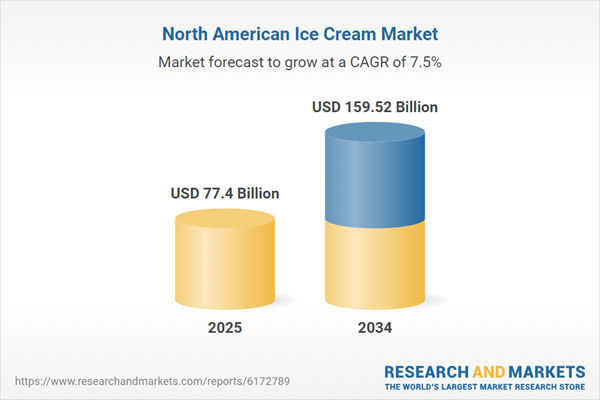Need-Specific Innovation and Creativity Leading the North America Ice Cream Market
The North America ice cream market including regions like Canada and United States, the developed regions where people have woken choices ensuring to take care of their health. Conventionally high calorie food and needs to be minimized with healthy substitutes. This makes it of paramount importance that companies select healthy ingredients for their ice cream. The United States is leading in making a more plant-based approach with combined with innovation. Organic ingredients, no sugar, no added preservatives are also given heavy importance while making choices by consumers. Vegan customers would prefer a plant-based alternative like soy milk, cashew, or almond milk rather than a regular dairy milk ice cream. Alcoholic ice creams have also gained demand with experiments in flavour under the same. Keeping individual choices in mind to cater the needs of a group of similar people in a market is a major driving force to boost customer acquisition and retention.North America Ice Cream Industry Segmentation
Ice cream is a frozen dessert made mainly using ingredients like dairy or non-dairy milk with additional sweeteners and variety of flavours. There are different flavours that are offered in the market ranging from as simple as vanilla to everyone’s favorite chocolate to hybrid ice creams like mint and chocolate chip, butter pecan, cookies, and cream, and many more.Based on different flavours offered, the market can be categorized into:
- Chocolate
- Fruit
- Vanilla
- Others
On the basis of category, the market can be divided into following:
- Impulse Ice Cream
- Take-Home Ice Cream
- Artisanal Ice Cream
Depending on the type of serving, it can be segregated into:
- Cup
- Stick
- Cone
- Brick
- Tub
- Others
Different distribution channels used for reaching the consumers are as follows:
- Supermarkets and Hypermarkets
- Convenience Stores
- Ice Cream Parlours
- Online Stores
- Others
Breakup by Region
- United States
- Canada
Creativity and Innovation Boosting the Demand for Ice-Cream in the Region
Ice cream is no longer a solo dessert. There is an increase in the demand for ice cream with rise in efforts to serve a simple ice cream in innovative ways to the customers. Ice cream served on top of a hot brownie or ice-cream combined with shakes or coffee is very prevalent and keeps attracting children to adults. Innovation is not limited to this. It includes using different ingredients to create new tastes like chocolate chip and cookie dough together or salted caramel or mint and chocolate. Sometimes simple flavours are given a heavy topping of roasted nuts or caramel to enhance the taste.There is a heavy inclination towards health consciousness among the people, which makes it important for the companies to invest in making flavourful yet fat-free ice-creams which do not excessively increase calories. This could also extend to taking care of consumers who are lactose intolerant or allergic to a particular ingredient or diabetic by substituting dairy milk with almond, coconut or soy milk and minimizing the sweetness, respectively.
Key Industry Players in North America Ice Cream Market
The report presents a detailed analysis of the following key players in the North America ice cream market, looking into their capacity, market shares, and latest developments like capacity expansions, plant turnarounds, and mergers and acquisitions:- BR IP Holder LLC (Baskin Robbins)
- Nestle SA
- Unilever Plc
- Turkey Hill Dairy
- Blue Bell Creameries, L.P.
- Wells Enterprises Inc.
- David Chapman’s Ice Cream Limited
- Others
Table of Contents
Companies Mentioned
The key companies featured in this North America Ice Cream market report include:- BR IP Holder LLC (Baskin Robbins)
- Nestlé SA
- Unilever Plc
- Turkey Hill Dairy
- Blue Bell Creameries, L.P.
- Wells Enterprises Inc.
- David Chapman’s Ice Cream Limited
Table Information
| Report Attribute | Details |
|---|---|
| No. of Pages | 120 |
| Published | August 2025 |
| Forecast Period | 2025 - 2034 |
| Estimated Market Value ( USD | $ 77.4 Billion |
| Forecasted Market Value ( USD | $ 159.52 Billion |
| Compound Annual Growth Rate | 7.5% |
| Regions Covered | North America |
| No. of Companies Mentioned | 8 |









